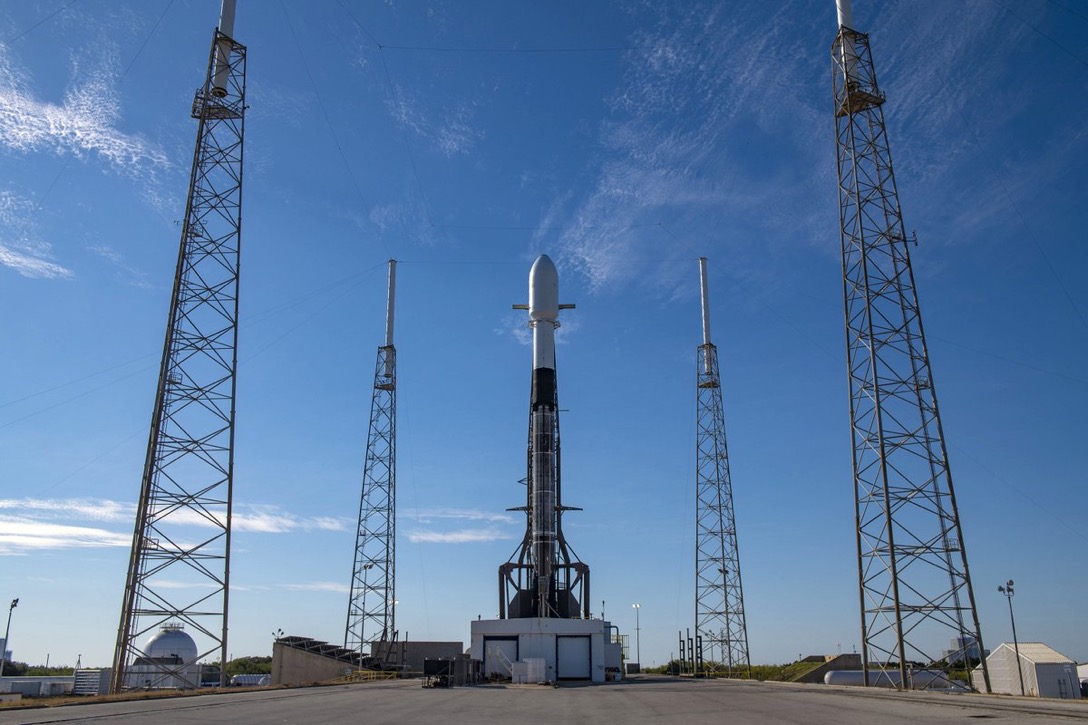On Sunday, January 24, at 10 a.m. EST, SpaceX set a new record as they launched 143 satellites into space using just one rocket. This record was previously held by PSLV (an Indian rocket), which in 2017 sent 104 satellites into space with one launch.
This historic launch of SpaceX’s Falcon 9 rocket, which was originally planned for January 23, had to be pushed back 24 hours due to bad weather in Florida that day. The rocket lifted off from Cape Canaveral Space Force Station launch pad, and made its way to a nearly 524-kilometre-high orbit around the Earth’s poles — a rare trajectory for this launch site.
Transporter-1 is a SpaceX rideshare mission, which was first introduced to the world in 2019. SpaceX’s SmallSat Rideshare Program essentially acts as an affordable carpool-like system for satellites starting at US$1 million for nearly 200 kilograms. Satellites of all different sizes and shapes were carried at Sunday’s launch, ranging from miniature sized CubeSats to the more weighty Microsatellites.
“I think it’s great that Elon Musk is doing so much to increase accessibility to space, making it seem like an attainable goal,” says first-year computer science student Armani Araujo.
“I hope that his satellites’ uses expand into other areas, such as making the internet more affordable than the overpriced options we currently have.”
The rideshare program is beneficial to those wishing to launch satellites into space, without the expense of purchasing their own rocket. Among the flight were communication satellites for Kepler Communications, a company based in Toronto. Others include satellites for the U.S. and Europe by a German-based company Exolaunch, Planet Labs, D-Orbit, Spaceflight Inc, NASA, and Capella Space, and many more.
Also on this ship were 10 Starlink satellites. These are the first in the constellation to deploy to a polar orbit.
“Only 10 were launched Sunday and they joined the over 1,200 already launched. There is no doubt that the thousands of satellites expected to be deployed will pose a challenge to astronomers worldwide,” says York Professor and Director of the Allan I. Carswell Observatory, Paul Delaney.
While Starlink has many advantages, such as bringing high-speed internet to rural areas, it may negatively impact some astronomers’ view of space depending on their astronomy field.
“These satellites in low Earth orbit (LEO) will reflect light and cause light streaks across time exposure images from ground-based observatories,” adding, “this will compromise some of our data collection processes,” says Delaney.
Scientists who need to look past Neptune for distant objects may experience difficulty after Starlink is completed. There is also fear that this will delay us from being notified of incoming comets.
“Astronomers and SpaceX are working on mitigation strategies and are having some success with darker, less reflective surfaces for example. It is unfortunate these measures and interactions between astronomers and companies did not occur before the launch of the satellites,” says Delaney.
SpaceX hopes to have 12,000 satellites orbiting earth for the future. When asked about the longevity of SpaceX’s program, Delaney remarks, “Given the seemingly unlimited demand modern society has on bandwidth, these constellation satellites are here to stay for quite a while.”
Also aboard the ship were the ashes of Dr. John Caldwell, a professor emeritus from the department of physics and astronomy, who sadly passed away in December 2019. Caldwell was an astronomer and a colleague of Delaney’s for nearly 35 years — they even worked on the Hubble Space Telescope and the Kepler Space Telescope together. On Sunday’s launch, Caldwell’s ashes were released into space.
We are living in a somewhat early age for space exploration. Delaney points out that it is likely space tourism will rise, as SpaceX has made plans to carry passengers to the ISS, in partnership with Axiom.


